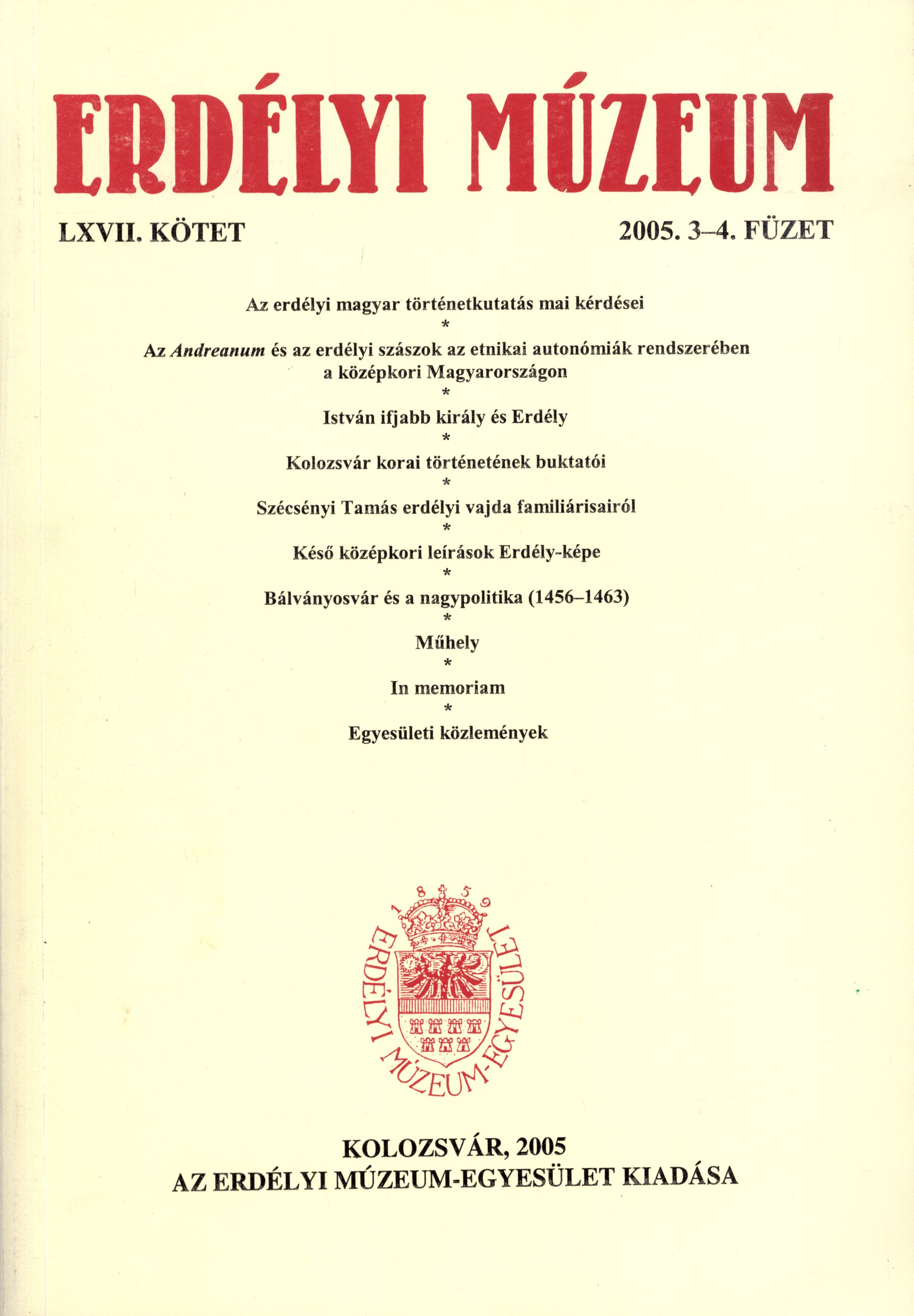Az erdélyi domonkos kolostorok a középkor végén és Bartók Márton 1718. évi jelentései
The Transylvanian Dominican Friaries at the End of Middle Ages and Martin Bartók's Reports from 1718
Author(s): Mária Lupescu MakóSubject(s): 18th Century, History of Religion
Published by: Erdélyi Múzeum-Egyesület
Keywords: Dominican friaries; Transylvania; Martin Bartók; Dominic Twinger; recatholization
Summary/Abstract: At the beginning of the 18th century a movement started to emerge in order to re-establish the former Dominican contrata of Transylvania and its friaries. The friars and their supporters joined their forces for this common purpose, but they fault to achieve that. In the second decade of the 18th century the active leader of this re-establishing movement was a Dominican friar, Martin Bartók. At the beginning of the summer of 1718 Bartók visited the former Dominican friaries and their churches from Transylvania, and wrote an exhaustive report to the master general of the order about the remarks made during his journey. At the same time, he composes a shorter report addressed to the Hungarian Provincial, Dominic Twinger. Both of the Latin reports are almost the same concerning their contents. Bartók’s remarks are quite precisely if we compare them with other sources regarding these friaries. Nowadays, both of the reports are to be found in Archivio Generale Ordinis Praedicatorum in Rome. During the journey, Bartók had a clear purpose: to make a chart of the old Dominican friaries and churches in order to regain them by the proper owners. He visited five of the altogether nine late medieval friaries of Transylvania: Kolozsvár, Brassó, Beszterce, Gyulafehérvár, and Szeben. In the present paper I set up three topics that concerns Bartók’s reports. The first one is dealing with the relationship between the late medieval and the 18th century condition of the friaries. The second topic is referring to the changes in the status of the buildings that occurred during the period between mid-16th century and the beginning of the 18th century. The final one is dealing with Bartók’s proposals and plans concerning the future of the Dominican Order in Transylvania. Some parts of the reports were already published by Béla Iványi. Being an important primary written source about the Dominicans who at the beginning of the 18th century tried to gain ground in Transylvania, Bartók’s reports were never analyzed from this point of view. Beside this, the reports set a new light on the recatholization process in Transylvania demonstrating the presence of a new competitor alongside the Jesuits and Franciscans in this phenomenon.
Journal: Erdélyi Múzeum
- Issue Year: LXVII/2005
- Issue No: 3-4
- Page Range: 138-155
- Page Count: 18
- Language: Hungarian

